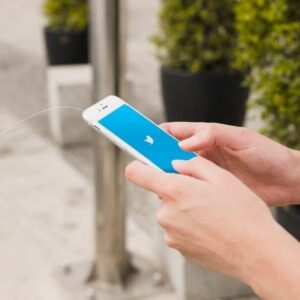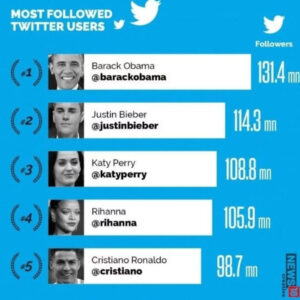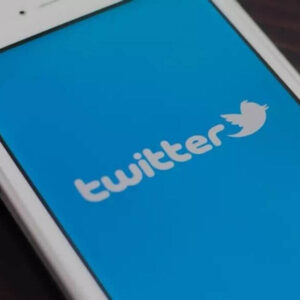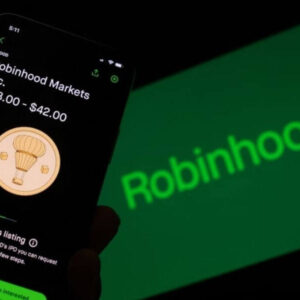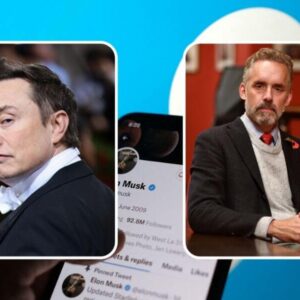What is Verification on Twitter? We’ve all gone for a real ride with Twitter verification over the last few years. Getting verified on Twitter — when someone has the blue check mark next to their profile — used to be how Twitter identified notable accounts, but it has since evolved and changed. It used to be that you needed to request verification on the social network; now, anybody with a Twitter Blue subscription ($11/month) and a verified phone number can be verified on Twitter.
In this post, we’ll give you a quick overview of the history of getting verified on Twitter, walk you through the steps to get verified on Twitter in 2023 and dig into whether or not it’s still worth pursuing verification at all
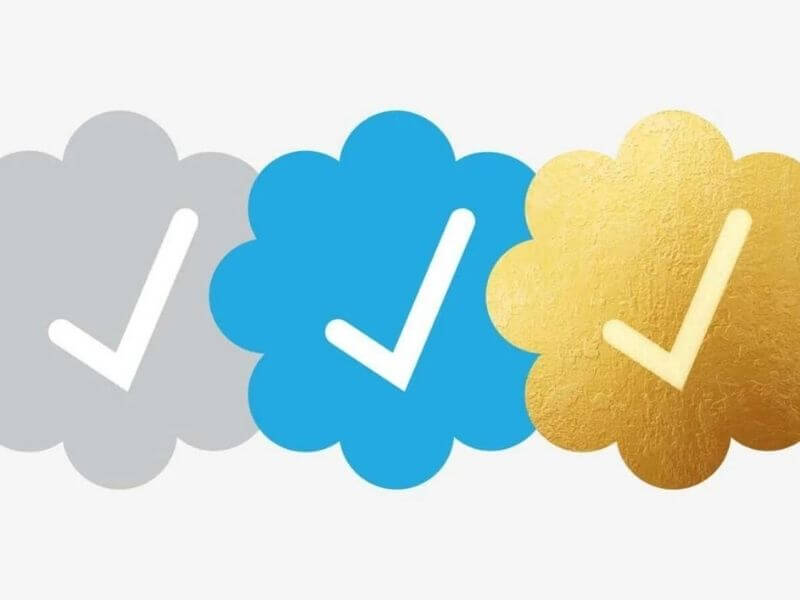
What is Verification on Twitter?
Initially, the blue badge next to someone’s profile was described by Twitter as a way to authenticate identity and voice. Twitter’s verification process was open to anybody, and if they could prove their identity and noteworthiness, they might get that elusive blue check mark.
Over time, people assumed the verification meant that Twitter was endorsing a certain profile, which wasn’t the case.
In 2017, Twitter paused its verification program altogether while it sorted out how to improve it. This project got deprioritized until late 2020, when Twitter reopened the conversation about account verification. In 2021, they opened up applications for anyone to request Twitter verification regardless of follower count.
A year later, in late 2022, after Elon Musk acquired the social network, the company changed how they do verification entirely. Now, anyone can be verified on Twitter if they use the company’s subscription service, Twitter Blue, and verify their phone number. This new program hit some snags in the early days, with some users using the tool to impersonate public figures and other influential individuals on social media. Still, Twitter has seemingly ironed out some of the troubles with impersonation and fake accounts, and the public is now aware that the verification badge can be associated with any account (not only notable ones), so the check mark’s perception has changed.
In 2023, Twitter decided to remove verification from for those who were verified through Twitter’s legacy verification program. Meaning that only Twitter Blue accounts are verified going forward.
Next up, how do you actually get verified on Twitter?
Is it still worth it to get verified on Twitter?
Whether or not it is worth being verified or paying for Twitter Blue is up for much debate, and other social media platforms are getting in the mix with Meta announcing Meta Verified, their own subscription service for a verified badge on Instagram.
Ultimately, choosing to pay for that check mark is completely up to you.
On the one hand, being verified on Twitter has lost its special touch because anyone can have it, so it’s no longer as much of a big deal as it used to be (I called my sister when I was verified!). On the other hand, being verified on Twitter is still a way to make your profile distinct, verify yourself as a real person, and make it clear that you’re serious about engaging and creating content on Twitter.
For some, Twitter Blue might be worthwhile on its own for the features it provides. Twitter is constantly iterating on their subscription, but Twitter Blue subscribers can currently organize their bookmarks into categories and post longer videos, among other things.
Twitter has already announced that Twitter Blue subscribers will soon see 50 percent fewer ads and — this is the big one — have their tweets prioritized in Twitter’s algorithm. If Twitter is a key platform for your business or audience, then it could be worthwhile to subscribe to Twitter Blue to bolster your Twitter marketing efforts.
What a journey it has been to get verified on Twitter. What do you think will be Twitter’s next feature? Send us a tweet!
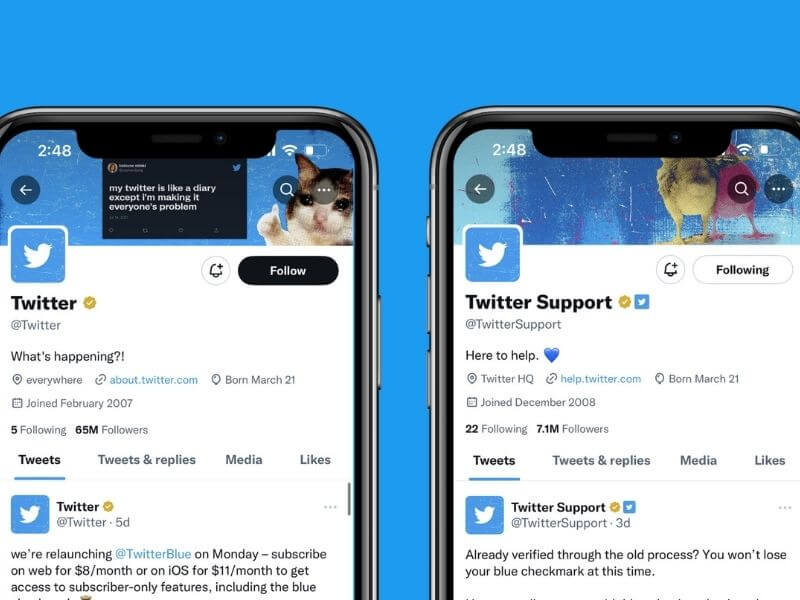
What are the different types of Twitter verification?
After sunsetting the legacy blue-check-only verification model, Twitter introduced new models for verification on Twitter.
While Twitter Blue is a paid subscription model that gives all eligible subscribers a blue badge, Twitter Verified Organizations uses color-coding to indicate what kind of business or brand you are on Twitter.
The Verified Organization system is largely for corporate entities like non-profit organizations, businesses, and government bodies. To become a verified organization on Twitter, you must apply through Twitter.
Blue check on Twitter
The blue badge on Twitter used to mean an account was of public interest and was “authentic, notable, and active.” Twitter no longer uses the legacy criteria, so now, a blue check means an account has subscribed to Twitter Blue.
Once you subscribe to Twitter Blue, you’ll have immediate access to all its features.
However, your blue check will only appear after Twitter reviews your account and ensures it meets all eligibility criteria.
Gold check on Twitter
A gold checkmark means an account is registered as an official business through Twitter’s Verified Organizations program.
Gold checkmarks come with a square profile image.
Gray check on Twitter
The gray checkmark means your account is registered as a government or multilateral organization or official on Twitter.
To be eligible for a gray check, government organizations at the national level may include:
- main executive office accounts,
- agency accounts overseeing specific areas of policy,
- main embassy and consulate accounts, and
- parliamentary or equivalent institutional and committee accounts.
Eligible government organizations at the state and local level may include main executive office accounts and main agency accounts overseeing areas like:
- crisis response,
- public safety,
- law enforcement, and
- regulatory issues.
Government individuals who are eligible may include:
- Heads of state (presidents, monarchs, and prime ministers),
- deputy heads of state (vice presidents, deputy prime ministers),
- national-level cabinet members or equivalent,
- the main official spokesperson for the executive branch or equivalent,
- and individual members of all chambers of the supranational or national congress, parliament, or their equivalent.
Multilateral organizations and individuals that are eligible may include:
- the main headquarters level,
- regional-level, and
- country-level institutional accounts,
- the head and deputy-head or equivalent of the multilateral organization.
FYI, people might also say a “white check” in Twitter terms when referring to verification. For the visually-impaired folks out there, this is because the check inside all of the different colored badges is white.
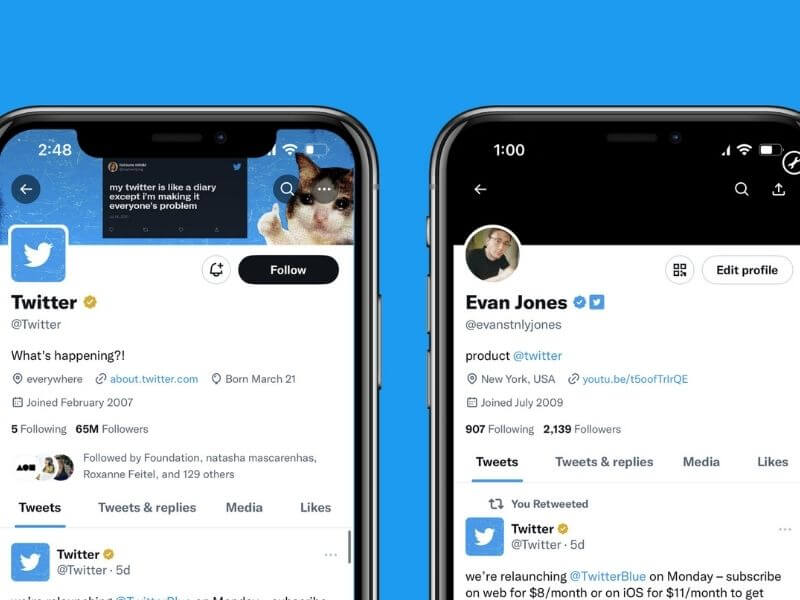
Above is information about What is Verification on Twitter? What is this Twitter about? that we have compiled. Hopefully, through the above content, you have a more detailed understanding of Verification on Twitter. Thank you for reading our post.
